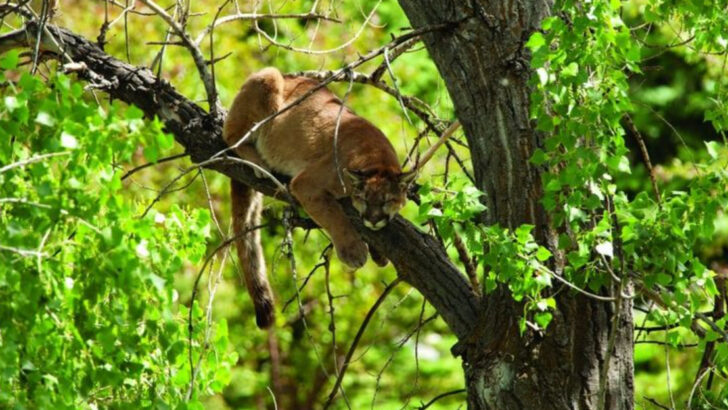The United States is home to some of the world’s oldest forests, harboring a remarkable diversity of wildlife.
These ancient lands are teeming with unique species, each playing a vital role in their ecosystem.
From towering trees to the smallest of insects, these habitats provide a glimpse into the natural history that shaped our world.
This blog post explores 19 incredible animals that inhabit these majestic forests, offering insights into their behaviors, adaptations, and the roles they play in maintaining the ecological balance.
Whether you’re a nature enthusiast or simply curious, these creatures promise to inspire and fascinate.
Spotted Owl
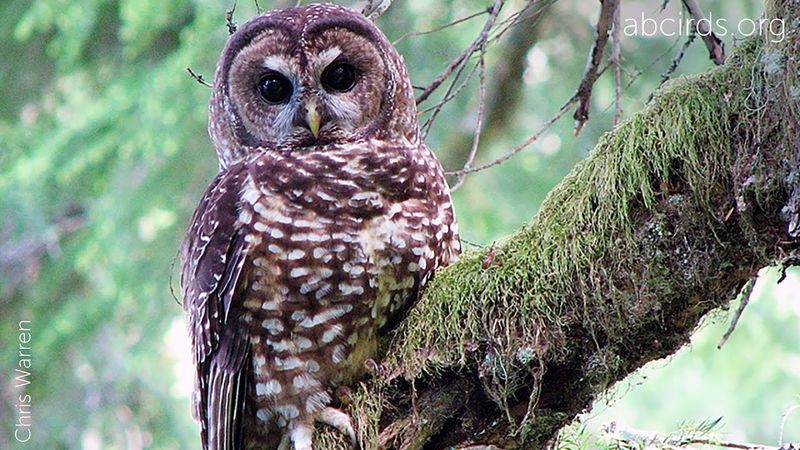
Silent as the night, the Spotted Owl is a master of its domain. These enigmatic creatures dwell in the old-growth forests of the Pacific Northwest, where they weave through the dense canopy with precision.
Known for their striking yellow eyes and mottled brown plumage, these owls are true woodland specters. Their presence is often a sign of a healthy ecosystem, as they prey on small mammals that inhabit the forest floor.
Despite their elusive nature, the Spotted Owl is a symbol of conservation efforts, highlighting the importance of preserving these ancient habitats.
Red Fox
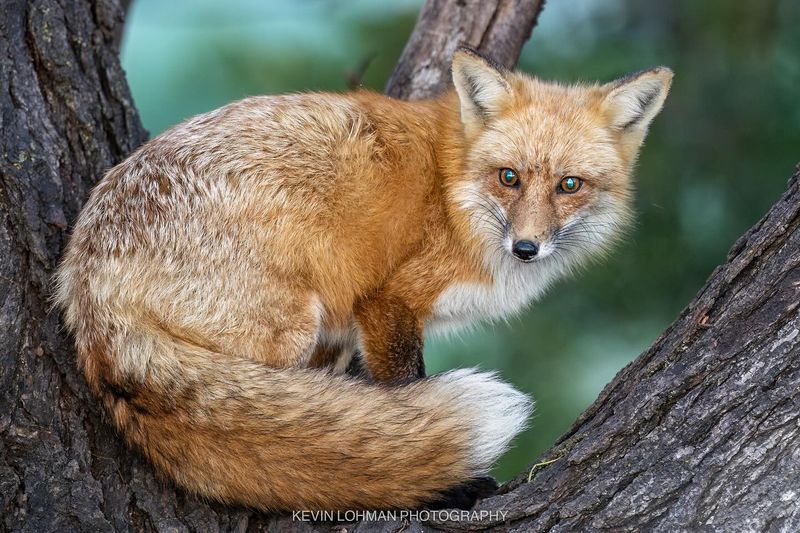
With a coat as fiery as its name suggests, the Red Fox is both cunning and charming. Found across the U.S.’s oldest forests, these foxes are known for their adaptability and intelligence.
Their ability to thrive in diverse environments makes them a ubiquitous presence. Red Foxes are skilled hunters, using their keen senses to track their prey through the underbrush.
Their playful antics and inquisitive nature make them a beloved sight for hikers and nature enthusiasts. As they dash through the trees, their vibrant fur stands out against the green backdrop.
American Black Bear
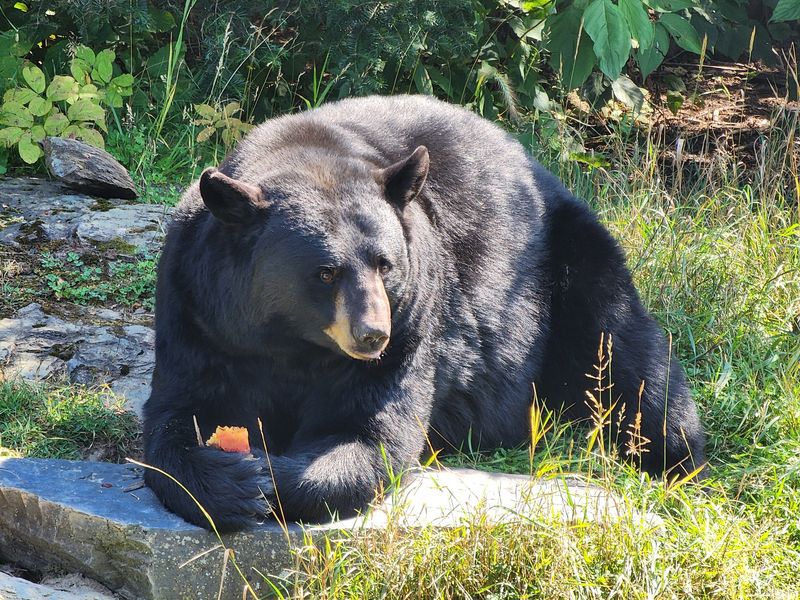
In the heart of America’s ancient forests roams the formidable American Black Bear. Known for its robust build and glossy black coat, this bear is a symbol of wilderness.
Often seen foraging for berries or fishing in streams, these bears play a critical role in their ecosystem. Despite their size, American Black Bears are surprisingly agile and can climb trees with ease.
Their gentle demeanor belies their strength, making them a fascinating subject for wildlife observers. These bears are a testament to the balance of power and tranquility in nature.
California Condor
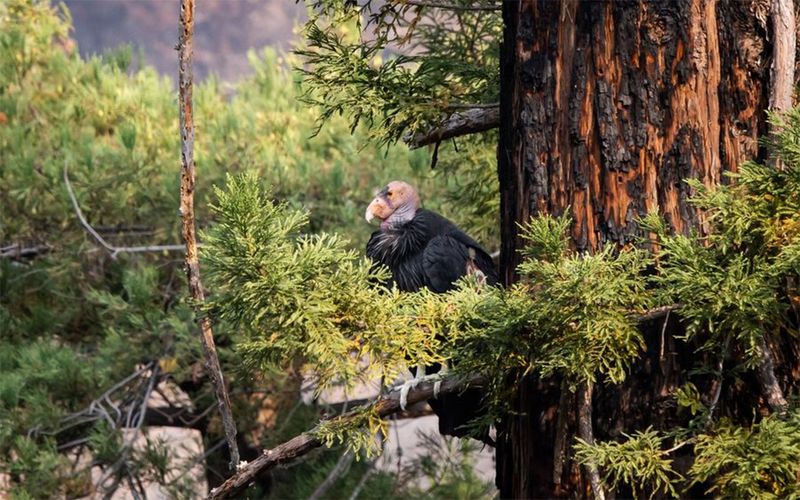
Once on the brink of extinction, the California Condor has made a remarkable recovery. With a wingspan stretching nearly ten feet, these majestic birds are among the largest in North America.
Soaring high above the U.S.’s oldest forests, they are a symbol of resilience and conservation success. Their distinctive bald heads and sharp beaks make them adept at scavenging, ensuring the forest floor remains clean.
The sight of a condor gliding effortlessly through the sky is a reminder of nature’s grandeur and the efforts required to protect it.
Eastern Box Turtle
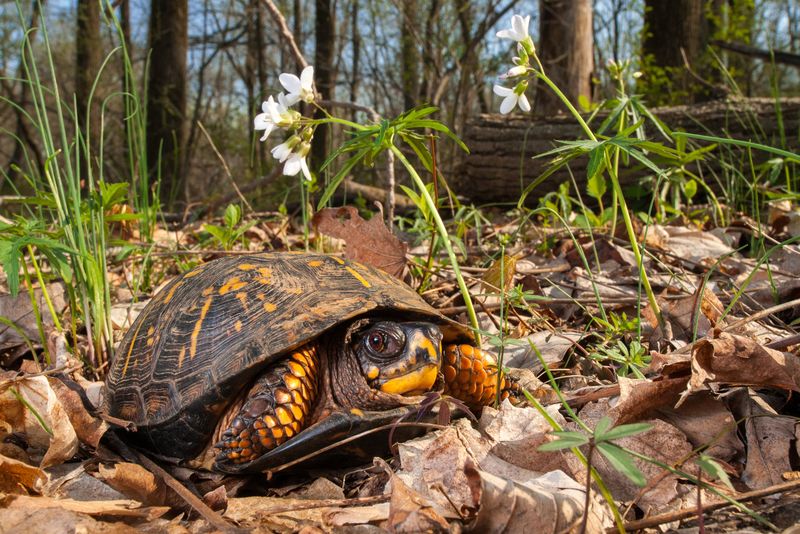
Slow and steady wins the race, and the Eastern Box Turtle epitomizes this adage. With its colorful, domed shell and wise demeanor, this turtle is a cherished resident of the U.S.’s ancient forests.
Their life in the understory is a testament to patience and resilience. These turtles play a crucial role in seed dispersal, aiding in the regeneration of the forest. Their diet of insects and fruits keeps the ecosystem in balance.
The Eastern Box Turtle’s peaceful journey through life offers a glimpse into the serene side of nature.
Northern Flying Squirrel
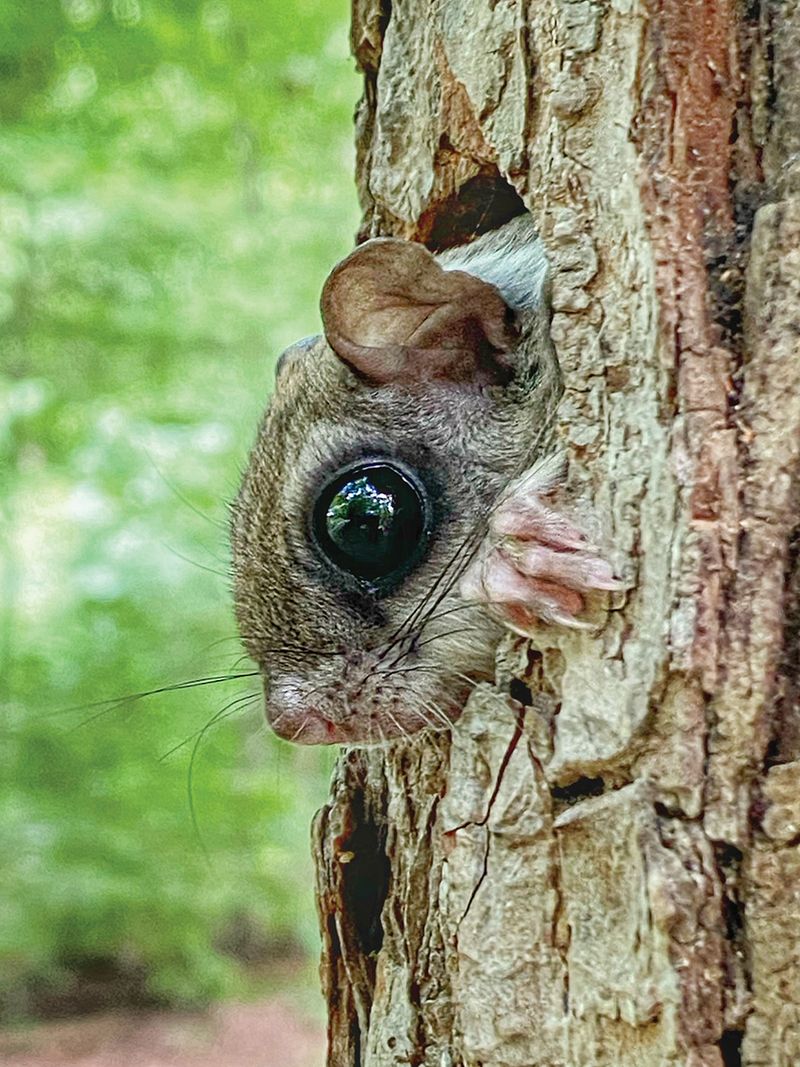
In the dead of night, the Northern Flying Squirrel takes to the skies with a graceful leap. These nocturnal acrobats are marvels of evolution, equipped with a patagium that allows them to glide between the trees of the U.S.’s oldest forests.
Their soft, dense fur and large eyes aid in navigating the dark canopy. By spreading fungi spores, these squirrels support the forest’s health and biodiversity.
Each glide is a testament to their adaptability and the interconnectedness of all forest inhabitants.
Elk
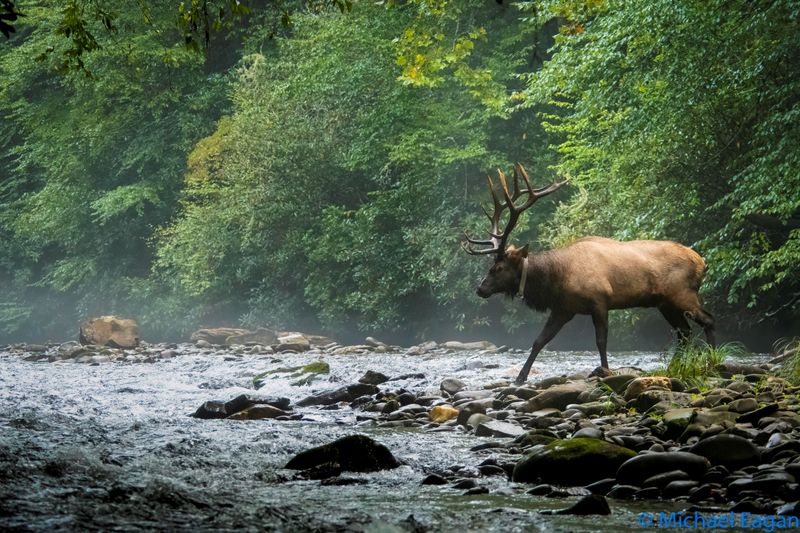
Towering above the undergrowth, the Elk is a majestic symbol of the wilderness. Their impressive antlers and strong presence make them one of the most awe-inspiring animals in America’s oldest forests.
Grazing peacefully, they contribute to the ecological balance by controlling vegetation growth. During the mating season, the haunting bugle of a bull Elk can be heard echoing through the woods.
These sounds are a call to nature’s grandeur and the cycles that have persisted for millennia. The Elk’s majesty is a reminder of the forest’s ancient rhythms.
Peregrine Falcon
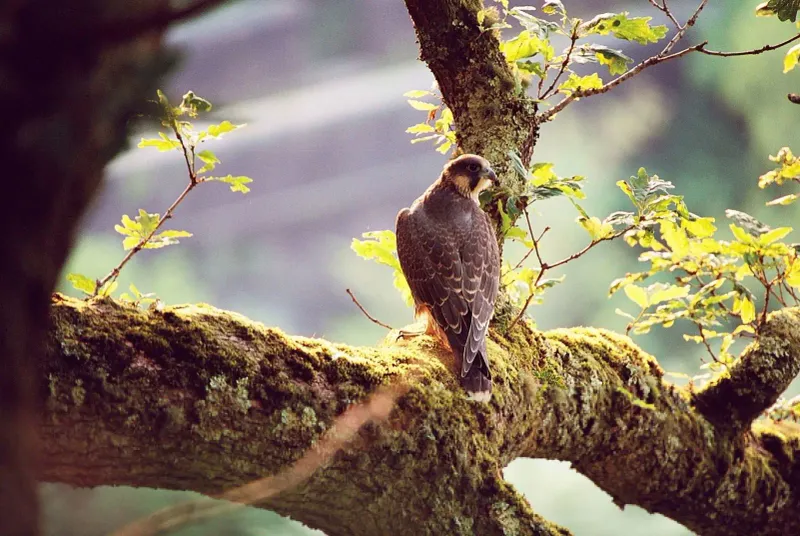
The Peregrine Falcon is a master of the skies, renowned for its breathtaking speed and agility. As it dives through the forested landscapes, this bird is a blur of motion, a testament to nature’s engineering prowess.
Its keen eyesight and stream-lined body enable it to hunt with precision. This falcon’s presence in the oldest forests of the U.S. is a testament to biodiversity and the complex food webs that sustain life.
Watching a Peregrine Falcon in action is to witness the raw, untamed power of nature’s design.
Great Horned Owl
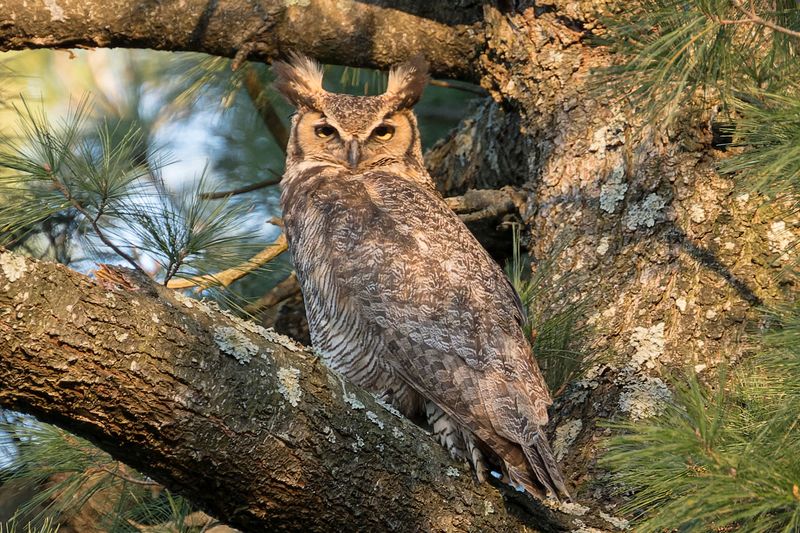
With a haunting call that echoes through the night, the Great Horned Owl is a commanding presence in the U.S.’s ancient forests. Its ear tufts and striking eyes make it an unmistakable figure.
These owls are formidable hunters, capable of capturing prey much larger than themselves. Their adaptability and intelligence allow them to thrive in various forest environments.
The Great Horned Owl is a symbol of mystery and the untamed spirit of the wild.
Timber Rattlesnake
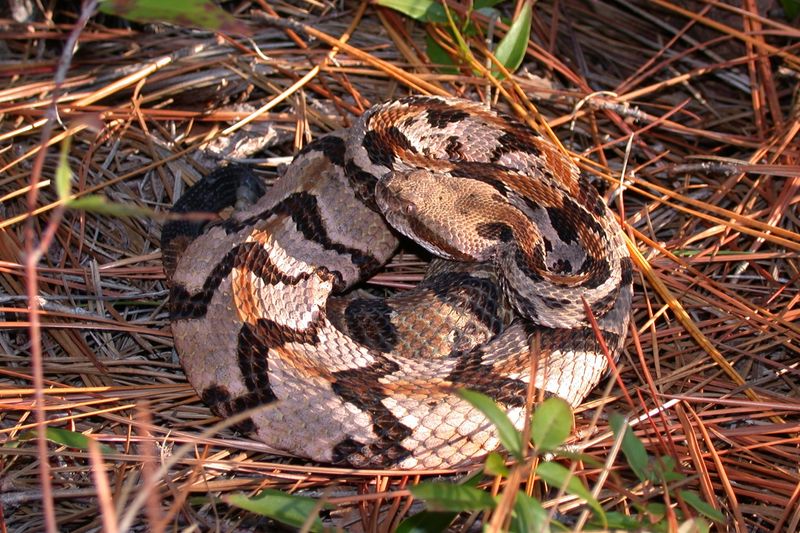
Hidden among the leaf litter, the Timber Rattlesnake embodies the dual nature of the forest—beauty and danger. With its distinctive rattle and intricate patterns, this snake is both feared and respected.
Timber Rattlesnakes play a vital role in controlling rodent populations. Their presence is a reminder of the predator-prey dynamics that maintain ecological balance.
Observing a Timber Rattlesnake reveals the delicate interplay of fear and fascination that characterizes encounters with wildlife.
Bald Eagle
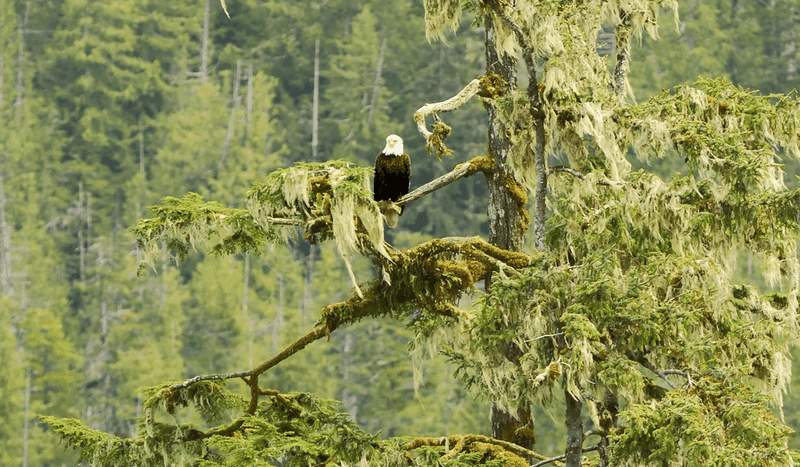
The Bald Eagle, with its regal white head and penetrating gaze, is an emblem of strength and freedom. Surveying the ancient forests from lofty perches, these birds embody the wild spirit of America.
Once facing the threat of extinction, their resurgence is a testament to successful conservation efforts. Eagles primarily feed on fish, hunting with unparalleled precision.
The sight of a Bald Eagle soaring over the forest evokes a sense of awe and a connection to nature’s enduring majesty.
Woodland Caribou
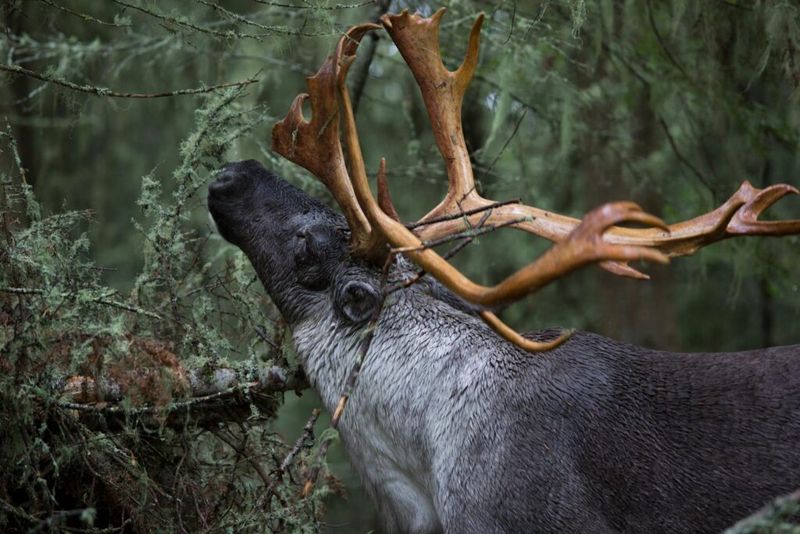
In the snow-laden forests of the northern U.S., the Woodland Caribou marches on. With large, sprawling antlers and a thick fur coat, they are well-equipped to endure harsh winters.
These caribou are integral to the forest ecosystem, aiding in plant growth through their grazing. They are also deeply rooted in indigenous cultures, symbolizing endurance and perseverance.
The journey of a Woodland Caribou is a story of resilience, echoing the timeless rhythms of the forest.
American Marten
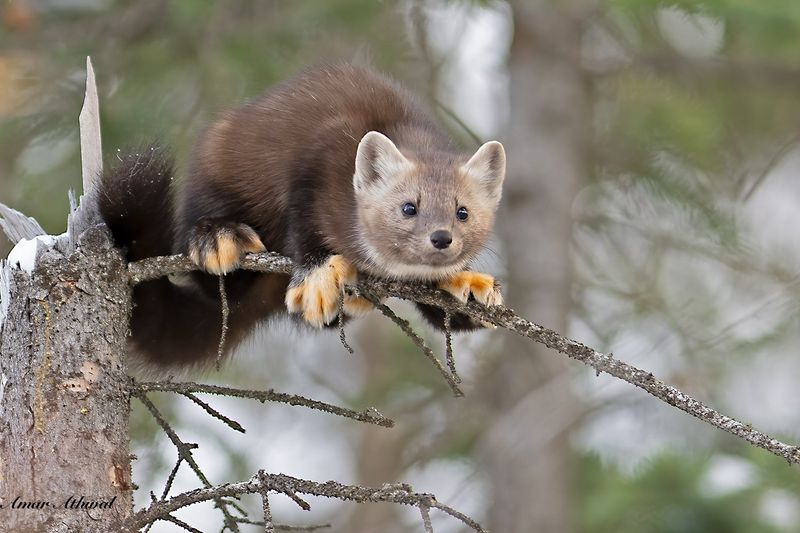
With boundless energy and a mischievous glint in its eyes, the American Marten is a playful resident of the U.S.’s oldest forests. These small yet agile creatures are skilled climbers, navigating the forest with ease.
Martens are solitary hunters, preying on small mammals and birds. Their presence indicates a healthy forest ecosystem.
With their bushy tails and sleek bodies, they are both charming and elusive, offering a delightful glimpse into the forest’s hidden wonders.
Mountain Lion
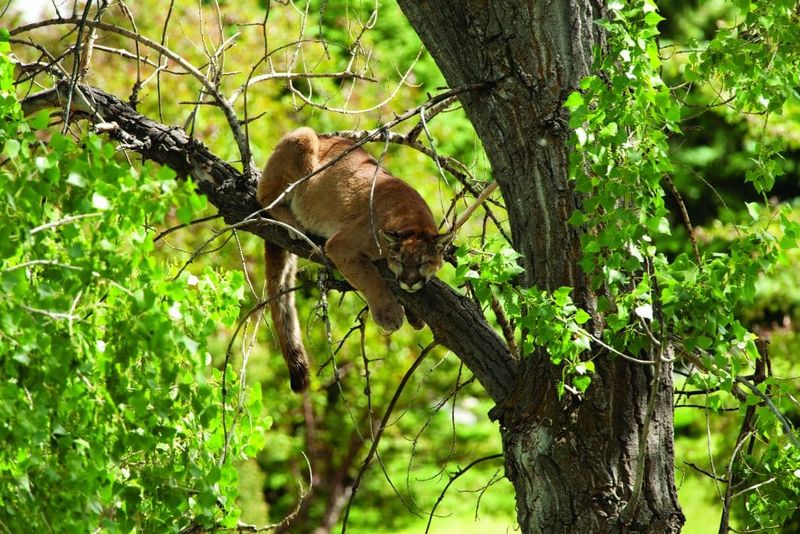
The Mountain Lion, known for its silent prowess, is a ghostly figure in the U.S.’s ancient forests. With a sleek body built for stealth, these cats are exquisite hunters.
Their solitary nature and adaptability allow them to thrive in diverse environments. As apex predators, Mountain Lions play a vital role in controlling prey populations.
Observing a Mountain Lion is akin to witnessing a master of the wilderness, a creature of power and grace.
Pileated Woodpecker
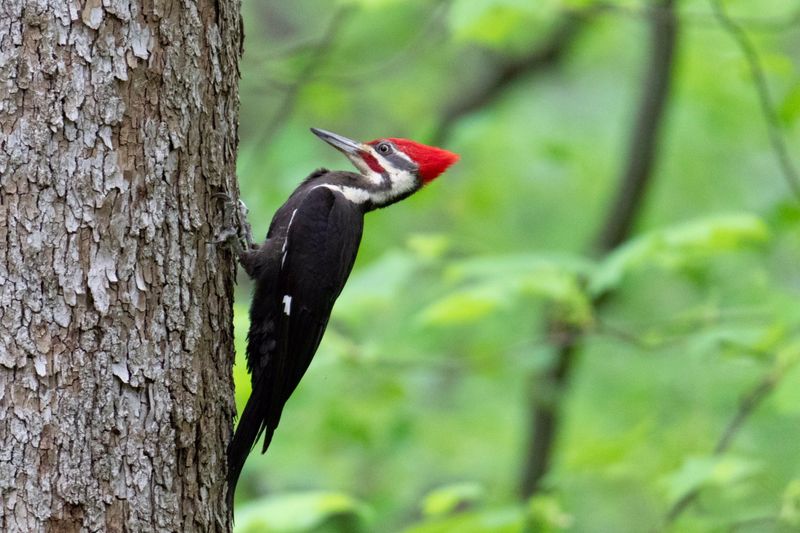
The rhythmic tapping of the Pileated Woodpecker echoes through the forest, a sign of vibrant life. With its striking red crest and powerful beak, this bird is a true artisan of the woods.
Creating cavities in trees, they provide nesting sites for other animals, showcasing the interconnectedness of forest life. Their presence is a testament to the importance of maintaining old-growth forests, where these woodpeckers thrive.
Bobcat
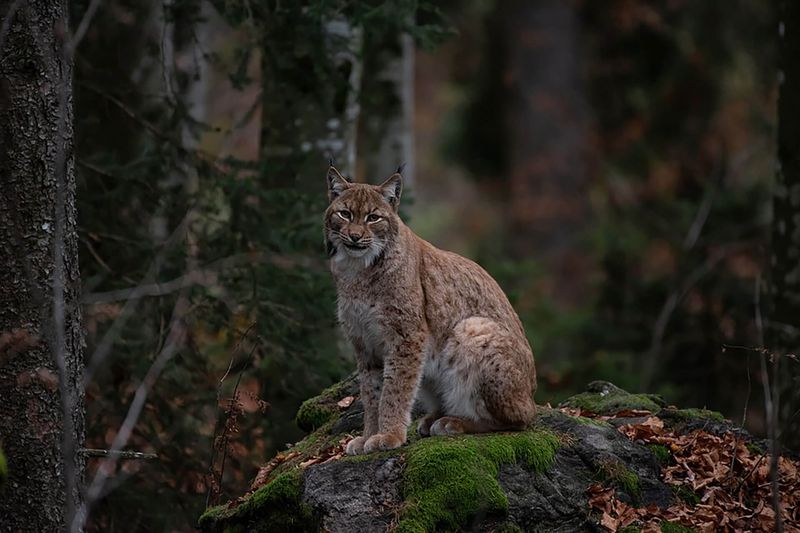
With tufted ears and a keen gaze, the Bobcat is a master of stealth and agility. These elusive creatures are solitary hunters, expertly navigating the dense undergrowth of the U.S.’s oldest forests.
Their spotted fur provides excellent camouflage, allowing them to surprise their prey. Bobcats are important in maintaining the balance of the ecosystem, controlling populations of small mammals and birds.
Their presence is a reminder of the wild, untamed spirit of the forest.
Gray Wolf
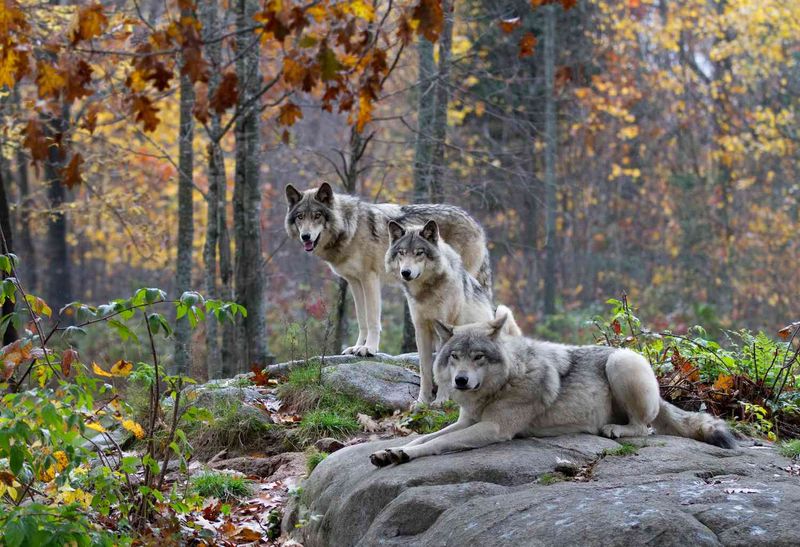
The haunting howl of the Gray Wolf pierces the silence of the forest night. As social creatures, wolves hunt in packs, showcasing their cooperative nature.
Their presence is crucial in maintaining the ecological balance, controlling populations of deer and other ungulates. The Gray Wolf is a symbol of wilderness and the complex dynamics of the forest.
Observing a wolf in its natural habitat is to witness the intricate dance of predator and prey.
Barred Owl

In the quiet corners of the forest, the Barred Owl stands vigil with striking, concentric circles framing its eyes. Known for their distinctive “who cooks for you” call, these owls are masters of both stealth and patience.
Hunting mainly at night, they rely on exceptional hearing and silent flight to catch their prey. Their presence is a testament to the rich biodiversity of the forest.
The Barred Owl embodies the quiet strength and mystery that define these ancient woods.
Northern Goshawk
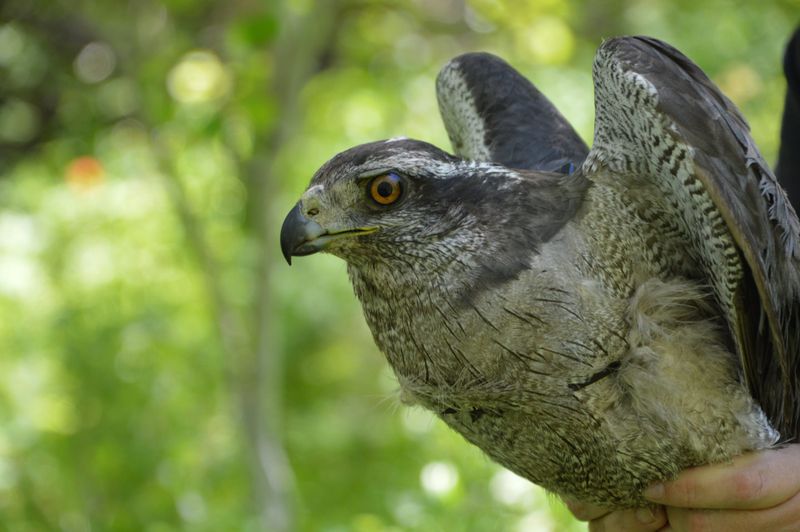
The Northern Goshawk, with its fierce gaze and powerful wings, is a master of the forest skies. This agile predator is known for its incredible hunting prowess, often seen darting through dense woods with remarkable speed. Its sharp talons and keen eyesight make it a formidable hunter.
Unlike many birds, the Northern Goshawk thrives in old-growth forests, where its skills are honed amid towering trees and complex understories. Its presence signals a healthy ecosystem, as this raptor requires vast, undisturbed territories to thrive.
Did you know? The Northern Goshawk plays a vital role in controlling small mammal populations, maintaining the forest’s delicate balance.

